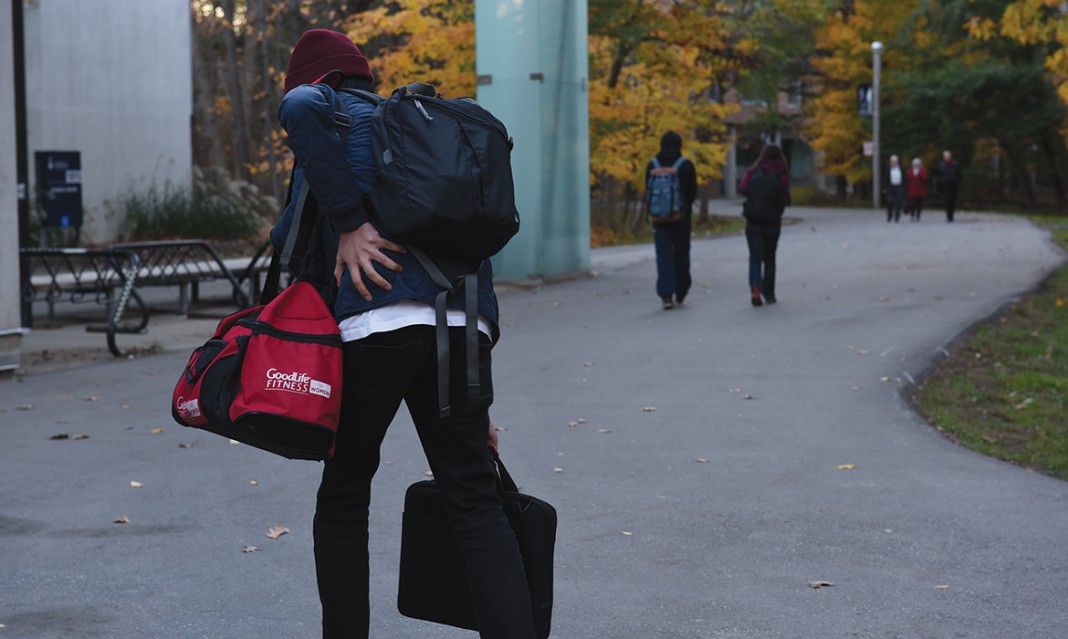Although back pain is typically associated with the elderly, many young adults share the same symptoms. Researchers hypothesize that a sedentary lifestyle combined with heavy backpacks causes back pain in younger adults. Is back pain something we should consider more seriously, or is it something that will “heal with time”?
TYPES OF BACK PAIN
Since the back consists of many complex networks of interconnecting nerves, joints, muscles, tendons, and ligaments, it’s hard to pinpoint the exact cause or source of pain. It’s even harder to diagnose when larger nerve systems in the spine begin to affect the legs or arms.
For these reasons, many doctors categorize back pain by anatomy (the location), duration, or cause.
For anatomy, your pain can be described as neck pain, middle back pain, lower back pain, or tailbone pain. If it’s being diagnosed by duration, then it can be classified as acute (up to 12 weeks) or chronic (lasts longer than 12 weeks). Diagnosing back pain by cause is the trickiest of the three.
The cause can be:
Nonspecific back pain: the cause isn’t clearly known, but muscles or ligaments are involved.
Back pain with radiculopathy: the nerves are the source of the pain, where one or more nerves do not work properly.
Back pain with spinal stenosis: the spinal canal undergoes abnormal narrowing (stenosis) in any area of the spine.
TREATMENTS
Not all treatments work for every single back pain, but many UTM students are pressed for time. Some students found relief in alternative medicine or do-it-yourself remedies to alleviate back pain.
Khush Shah, a fifth-year molecular biology specialist, started experiencing back pain near the end of her second year. She believes that her excessive computer use, improper posture, and sleeping positions lead to her chronic pain. Shah avoids taking medications for her pain. Instead, she relies on hot showers and back rubs.
Stephanie Marquez, a fourth-year biology student, believes that her heavy backpack, along with a slip on the ice in 2013, led to her back pain. She also hasn’t had time to visit a doctor. When her back acts up, she uses Salonpas, a menthol pain relief patch, for a quick fix and massages Wood Lock (also known as “white flower oil”), a Chinese medical ointment, into her back. In addition to home remedies, Marquez started yoga to address her pain.
Betty Kim, a recent English program graduate, also avoids medication for her chronic back pain. She first noticed it at the beginning of high school. For her, exercising regularly helped relieve some of the pain. She adds stretches to her routine, but she found that stretching wasn’t as effective as exercising.
Tyler Quennell, an athletic therapist and registered massage therapist at UTM’s Sports Clinic, explains that poor ergonomics also causes back pain. He discussed how every seat at UTM is designed for the “average” human body. But there is a range of body types (after all, this is UTM, diverse in every way). The seats we sit in may look comfortable, but for someone who is 5’ or 6’1”, sitting becomes uncomfortable after a while.
Quennell says that most students who come into the sports clinic for back pain usually come in for lower back pain. If lower back pain isn’t resolved right away, it leads to future problems with the neck and knees. As Quennell explains, the body is interconnected, and if one body part suffers, a domino effect happens and other parts begin to suffer as well.
Quennell recommends that students who suffer from back pain not only visit the clinic, but also add more movement into their lifestyle. Movement leads to more (and freer) movement, and if the body has an environment that allows it to heal itself, back pain is minimized and you’re less likely to suffer in the future. He also recommends that students reduce the weight of their backpacks if they can, since backpacks add unnecessary stress to the back and spine.
BACKPACKS & LAPTOPS: THE ROOT OF THE PROBLEM
An iPad with a year’s worth of books on it is much lighter than a backpack with five books in hard copy, but until a major industry change comes about for textbooks, we have to adapt.
Researchers from Indiana University recommend students carry bags that are 10% of their body weight, but most university students carry around 15–30% of their weight in their bags. This is 12–20 pounds being carried around every day.
A laptop (as opposed to a tablet, for example) is also a major source of weight. Want to reduce your backpack’s load even more? Here are the lightest laptops from last year:
Acer Aspire S7-391
(2.87 lbs / 1.3 kg)
Apple’s MacBook Air 13-inch
(2.87 lbs /1.3 kg)
Asus ZenBook Touch UX31A
(2.87 lbs / 1.3 kg)
Dell Latitude 12 (E7240)
( 3 lbs / 1.36 kg)
Dell XPS 11
(2.50 lbs / 1.13 kg)
HP Pavilion TouchSmart 11
(3.30 lbs / 1.5 kg)
Lenovo Yoga 11s
(3.1 lbs / 1.4 kg)
Samsung Ativ Book 9 Lite
(3.5 lbs / 1.6 kg)
Sony Vaio Pro 13
(2.43 lbs / 1.1 kg)
Toshiba Portégé Z930-14D
(2.47 lbs / 1.12 kg)
If back pain affects your daily life, it’s important to seek medical help. In the meantime, lighten your backpack load and try to incorporate exercise into your daily routine.



